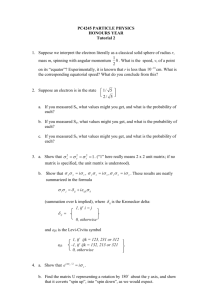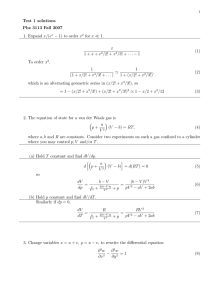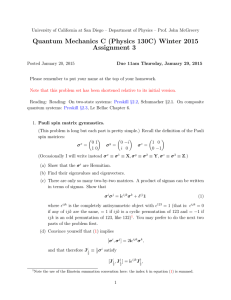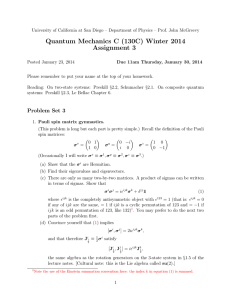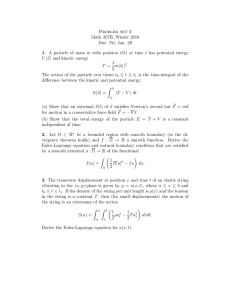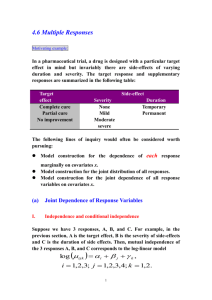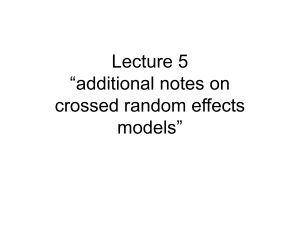Euler-Lagrange Equations for charged particle in a field The Lagrangian is 1 q
advertisement
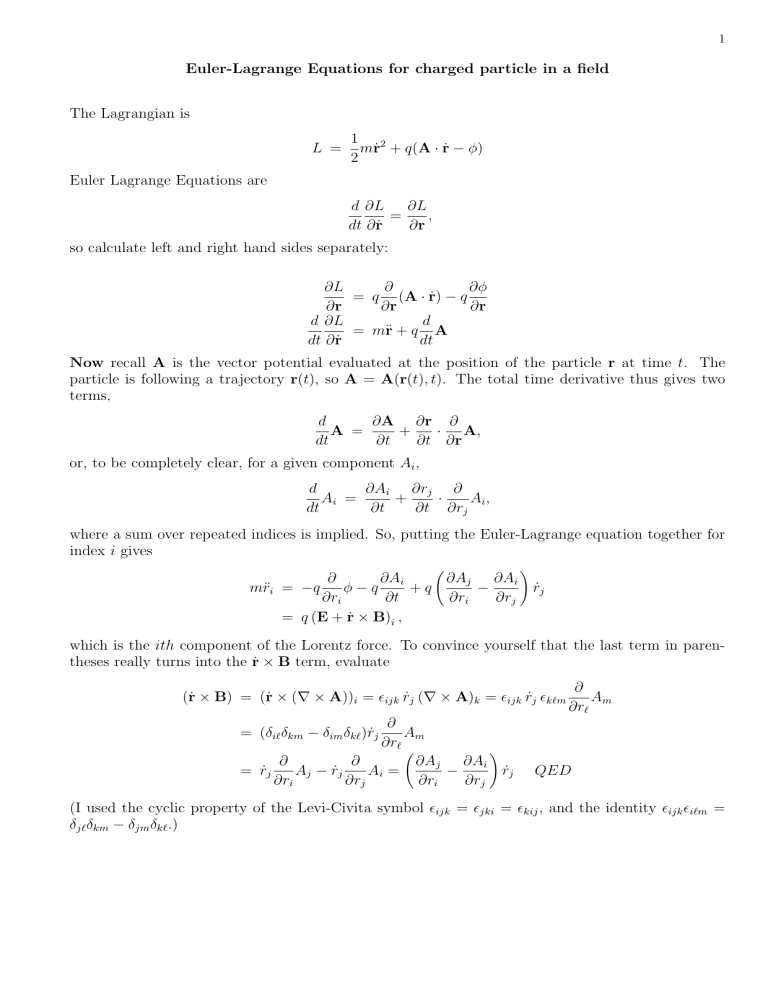
1 Euler-Lagrange Equations for charged particle in a field The Lagrangian is L = 1 2 mṙ + q(A · ṙ − φ) 2 Euler Lagrange Equations are d ∂L ∂L = , dt ∂ ṙ ∂r so calculate left and right hand sides separately: ∂ ∂φ ∂L = q (A · ṙ) − q ∂r ∂r ∂r d ∂L d = mr̈ + q A dt ∂ ṙ dt Now recall A is the vector potential evaluated at the position of the particle r at time t. The particle is following a trajectory r(t), so A = A(r(t), t). The total time derivative thus gives two terms, d ∂A ∂r ∂ A = + · A, dt ∂t ∂t ∂r or, to be completely clear, for a given component Ai , d ∂Ai ∂rj ∂ Ai = + · Ai , dt ∂t ∂t ∂rj where a sum over repeated indices is implied. So, putting the Euler-Lagrange equation together for index i gives à ! ∂ ∂Aj ∂Ai ∂Ai mr̈i = −q φ−q +q − ṙj ∂ri ∂t ∂ri ∂rj = q (E + ṙ × B)i , which is the ith component of the Lorentz force. To convince yourself that the last term in parentheses really turns into the ṙ × B term, evaluate (ṙ × B) = (ṙ × (∇ × A))i = ²ijk ṙj (∇ × A)k = ²ijk ṙj ²k`m ∂ Am ∂r` à ! ∂ ∂ ∂Ai ∂Aj = ṙj Aj − ṙj Ai = − ṙj ∂ri ∂rj ∂ri ∂rj ∂ Am ∂r` = (δi` δkm − δim δk` )ṙj QED (I used the cyclic property of the Levi-Civita symbol ²ijk = ²jki = ²kij , and the identity ²ijk ²i`m = δj` δkm − δjm δk` .)

